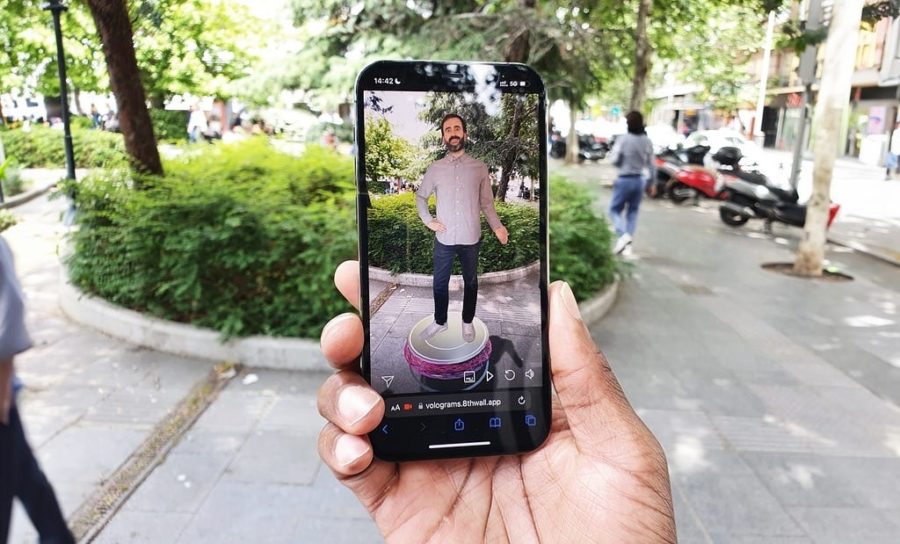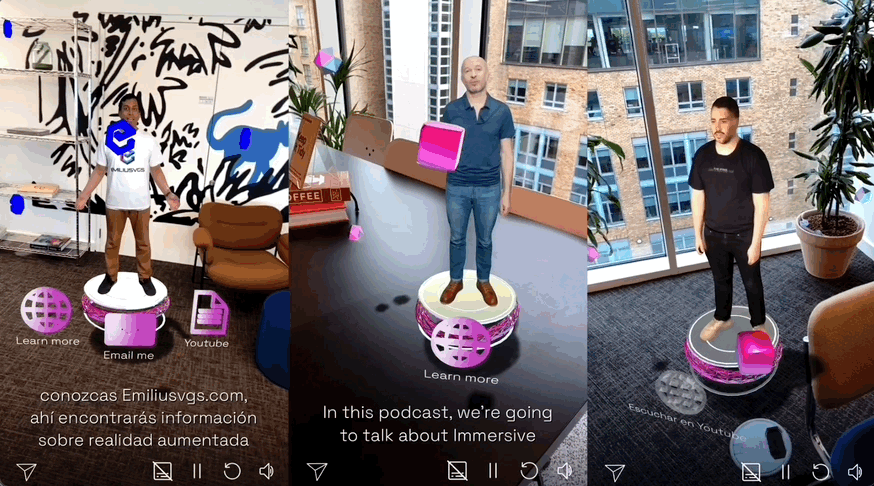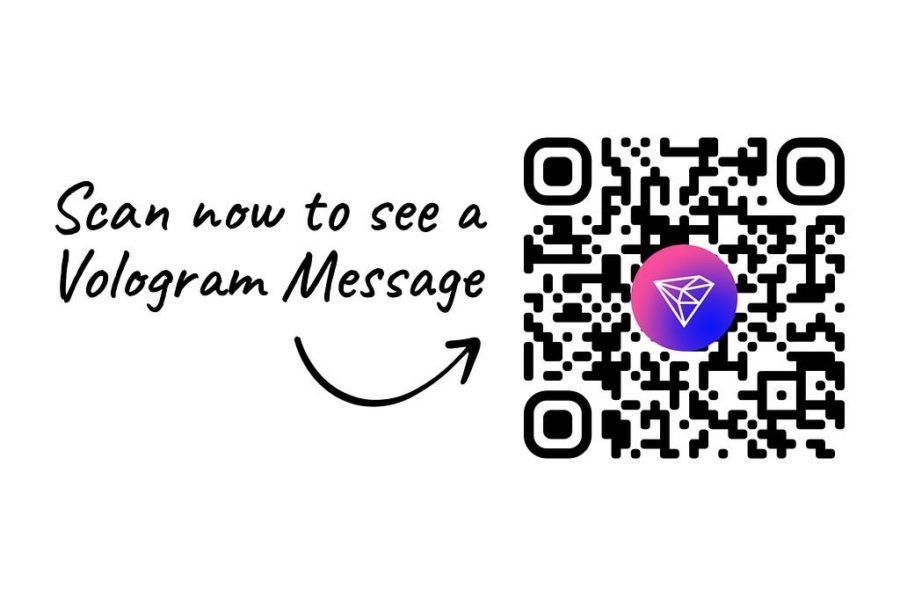
In General XR News
May 26, 2023 – Volograms, a provider of tools for creating 3D holograms using a single camera, has announced “Vologram Messages,” a new creation system powered by AI that can turn standard video into professional quality 3D holograms.
Now, anyone looking for a better way to engage people — from marketing announcements to corporate communications to wedding invitations — can simply record a standard video of a person, upload their clip, and receive a 3D version of that person that can be viewed anywhere, according to the company.
“From the moment Volograms was founded, our goal was fairly simple: we wanted to create a way to make volumetric holograms accessible to anyone and everyone,” said Rafa Pagés, CEO at Volograms. “With the introduction of Vologram Messages, we can now offer businesses and organizations a way to simplify the 3D hologram creation process and make it accessible to everyone. For a business looking to announce, promote, sell or even just engage with their own teams, this is an easy and affordable way to stand out.”
Volograms stated that where most comparable technologies require multiple cameras or depth sensors working in unison to create a 3D video, its own proprietary single-camera solution instead uses advanced AI algorithms to analyze a normal recording of a person and extrapolate a 3D volumetric hologram, viewable from any angle.

In 2021, this breakthrough led to the introduction of Volograms’ Volu, a personal 3D hologram creation tool for mobile devices that allowed Apple iOS users to simply record a five-second video, which was converted into a 3D hologram to be viewed and shared within the app. Vologram Messages now takes that technology and goes further, offering companies and organizations a professional holographic solution using any camera, viewable anywhere.
Vologram Messages users can record normal videos with audio, select the length — currently up to two minutes, but longer clips are available upon request — and upload the clip directly to Volograms’ cloud servers. The video is then converted automatically from 2D to 3D, and from there can be integrated into an interactive web-based augmented reality (webAR) template of their choice. Users can customize the template to include specific calls to action, including initiating user sign-ups, steering audiences to specific web pages and more. Additional visual elements and personalized copy can be added as well.
Volograms noted that for customers looking to go even further, advanced interactive options can also be requested. Working with a handful of established partners, the company stated that it can deliver tailored user flows, interactive product demos, customized analytics, gamified experiences and more to create elaborate and unique campaigns.
Once complete, interactive experiences are stored in Volograms’ cloud servers, ensuring that experiences can be accessed on any web browser or smart device. Through a partnership with volumetric video editing and streaming provider Arcturus, the clip is streamed from the cloud using an adaptive bitrate that compresses the file, ensuring a high-quality stream regardless of broadband speeds. Users then receive a link that can be integrated into websites, sent via email or even shared via social media, as well as a personalized QR code, which can be included on any official materials, product labels, business cards and more.
Volograms added that since its founding in 2018 it has raised over USD $3 million in venture funding to help build more accessible volumetric holograms. According to the company, the release of Vologram Messages marks the first in a series of major releases planned for 2023, all focused on increasing the accessibility of 3D volumetric holograms through a comprehensive platform.
For more information on Volograms and its new Vologram Messages platform, along with information on a free trial of the solution, please visit the company’s website.

Image credit: Volograms
About the author
Sam is the Founder and Managing Editor of Auganix. With a background in research and report writing, he has been covering XR industry news for the past seven years.




